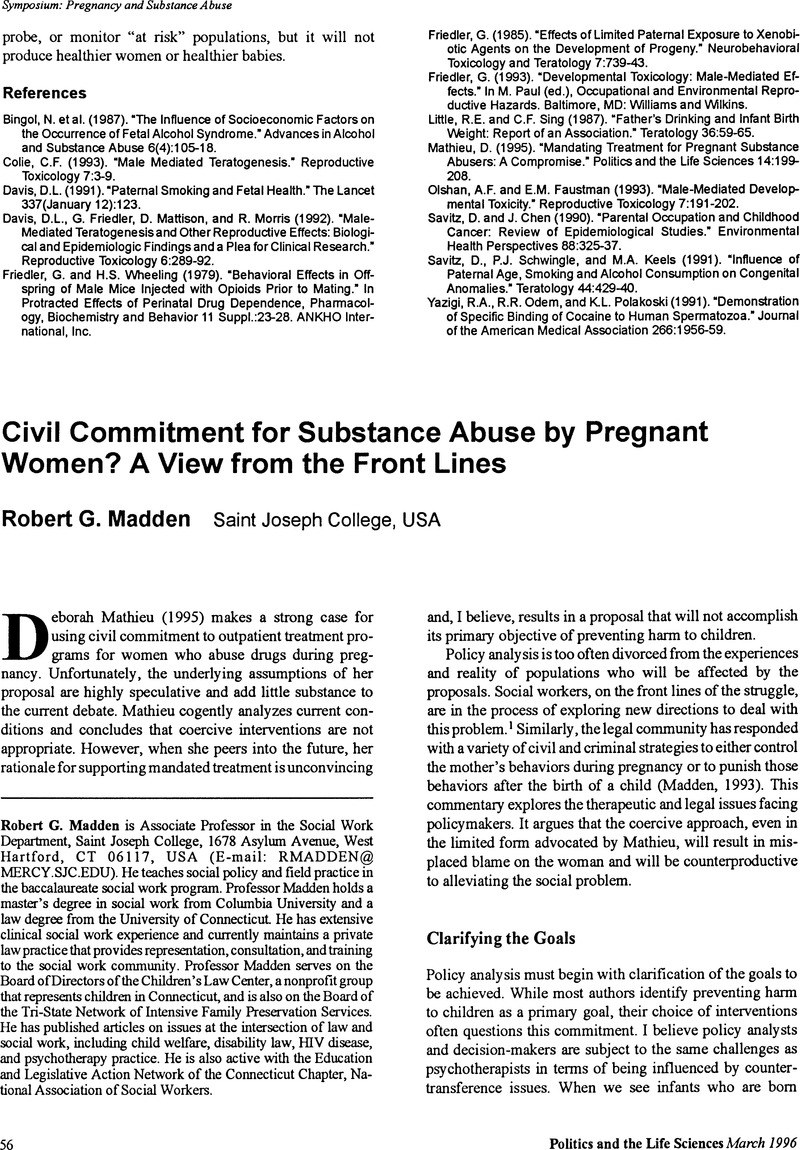Crossref Citations
This article has been cited by the following publications. This list is generated based on data provided by Crossref.
Abel, Ernest L.
1998.
Protecting Fetuses from Certain Harm.
Politics and the Life Sciences,
Vol. 17,
Issue. 2,
p.
113.
Roberts, Laura Weiss
and
Dunn, Laura B
2003.
Ethical considerations in caring for women with substance use disorders.
Obstetrics and Gynecology Clinics of North America,
Vol. 30,
Issue. 3,
p.
559.
Thomas, Sue
Cannon, Carol
and
French, Jillian
2015.
The Effects of State Alcohol and Pregnancy Policies on Women’s Health and Healthy Pregnancies.
Journal of Women, Politics & Policy,
Vol. 36,
Issue. 1,
p.
68.
Thomas, Sue
Treffers, Ryan
Berglas, Nancy F.
Drabble, Laurie
and
Roberts, Sarah C. M.
2018.
Drug Use During Pregnancy Policies in the United States From 1970 to 2016.
Contemporary Drug Problems,
Vol. 45,
Issue. 4,
p.
441.



